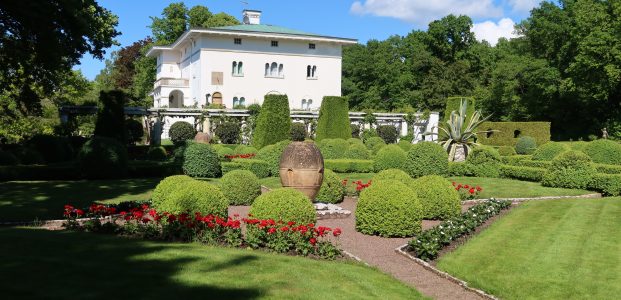Confusingly our next stop is called Borgholm – just a few days after we left the Danish island of Bornholm! Borgholm is a small holiday town a bit over half way up the Kalmarsund on the Öland island side. Öland island has always been favoured by the Swedish Royal Family and they have their summer residence and gardens just up the hill from the marina. The main landmark through (both on land and from the sea) is Borgholm Castle. The first mention of this is in 1281 when it was just a round defensive tower – one of the first to be built by a Swedish monarch. Since then it has gone through various iterations. From 1572-92 King Johan III transformed it into a renaissance castle; four new wings were added, four round corner towers were added and the new Royal Castle was built next to the old one which is now the only remaining medieval part of the castle. After it sustained heavy damage in the Kalmar War (1611-13) King Carl Gustav planned to transform it into a Baroque Palace, but his ambition exceeded his ability to deliver (something still true of most politicians!) and the plan was never realised. This wasn’t helped by the fact that under the Roskilde Peace Treaty of 1658, Sweden gained all the territory over to the Øresund which meant that the castle was no longer strategically significant. In the 18th century the castle was finally abandoned to the elements and a fire ripped through it in 1806. Some far-sighted Swedes started trying to preserve the ruin in 1880 and this work still goes on ….
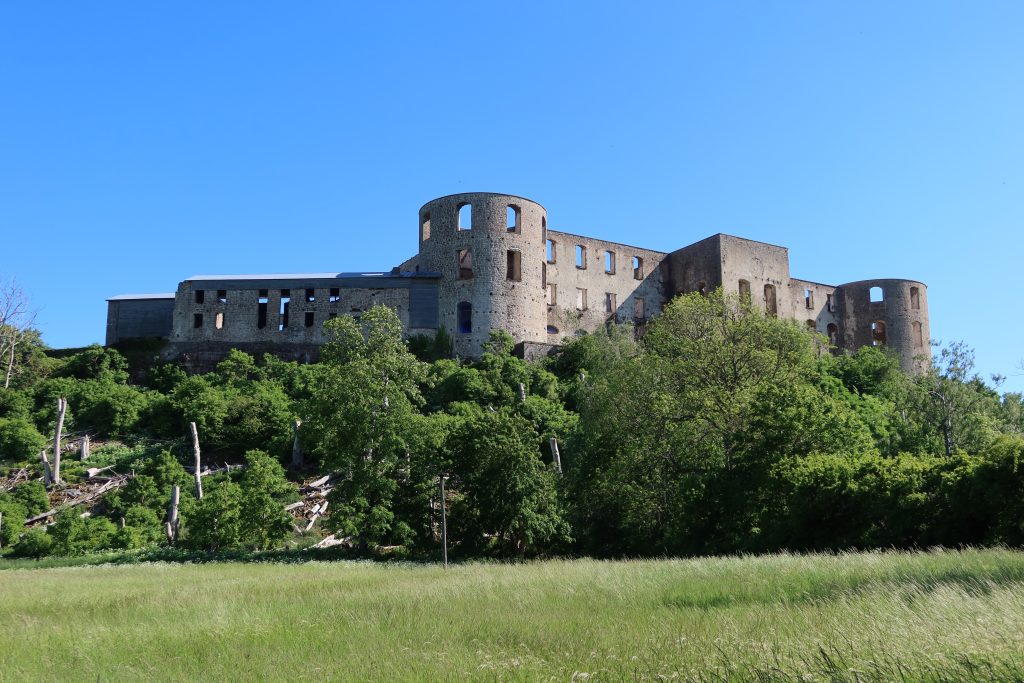
Up by the castle is a cairn. This is not any old cairn, but the sort of cairn that gives all other cairns an inferiority complex. As if that wasn’t enough, it is topped by a huge stone; this is called The Hunt Stone. This is engraved with the words “In memory of King Karl XV, this stone was erected by his hunting club and the people of Öland“. There is apparently hidden in the cairn a copper cylinder containing a parchment and three coins minted during the reign of Karl XV. The cairn dates from 1873 and surprisingly in that time no-one seems to have tried to find the copper cylinder, or have they?
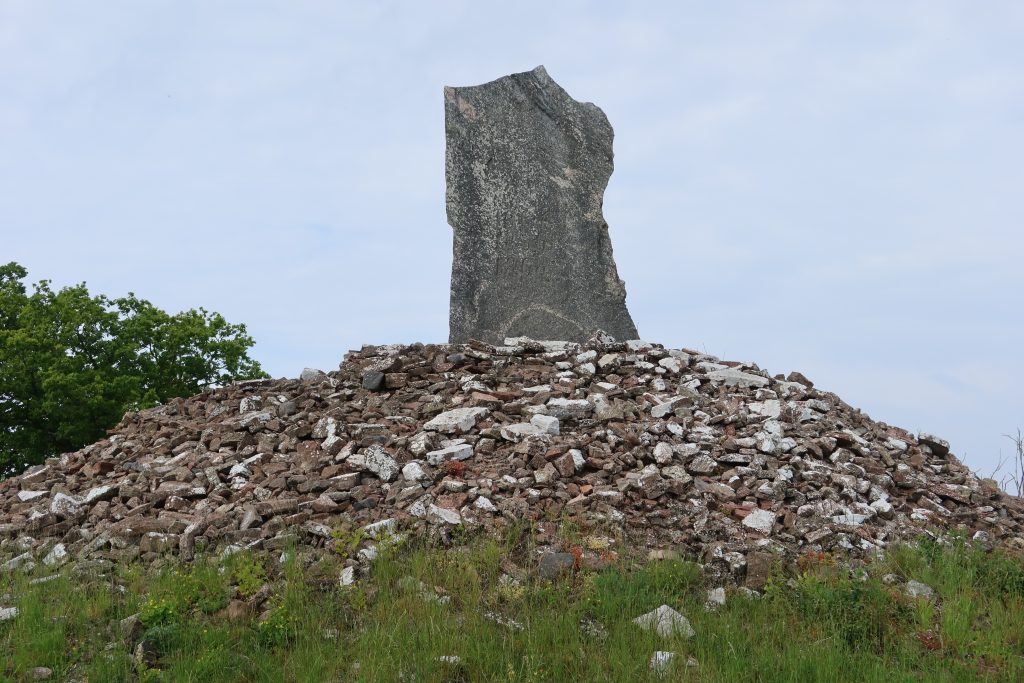
Close to the ruined Borgholm Slott is another much more modest castle – Sollidens Slott. It seems that you just can’t have too many castles …. To be fair to the Swedish Royal Family though, in contrast to other royal families, King Carl Gustaf himself owns only one palace and that is Sollidens. All the other castles and palaces belong to the state. Sollidens Slott is used as a summer residence by the Royal Family and in particular is used for Victoriadagen; Victoria Day. This is an annual celebration of Crown Princess Victoria’s birthday. Her full title is Crown Princess of Sweden, Duchess of Västergötland and she is the heir to the Swedish throne, as the eldest child of King Carl XVI Gustaf. She is guaranteed ascending to the throne by Sweden’s 1979 Act of Succession. This was the first law in Western Europe to adopt royal absolute primogeniture – in contrast to many countries where it is the first-born son who accedes to the throne. If this happens, she would be Sweden’s fourth queen regnant – the first since 1720. So, her birthday in mid-July is a good excuse for a celebration – something which the Swedes love. It is also an excuse for bringing out all the flags left over from National Day as it is known as a flag flying day – in other words all national institutions, individuals, official agencies and companies should fly the national flag that day. Actually the Swedes like flying flags every day, so this is not tough for them!
In the afternoon we went and had a look round the gardens of Sollidens Slott, including as they do an English Park. In the gardens were a series of sculptures, making for an intriguing tour.
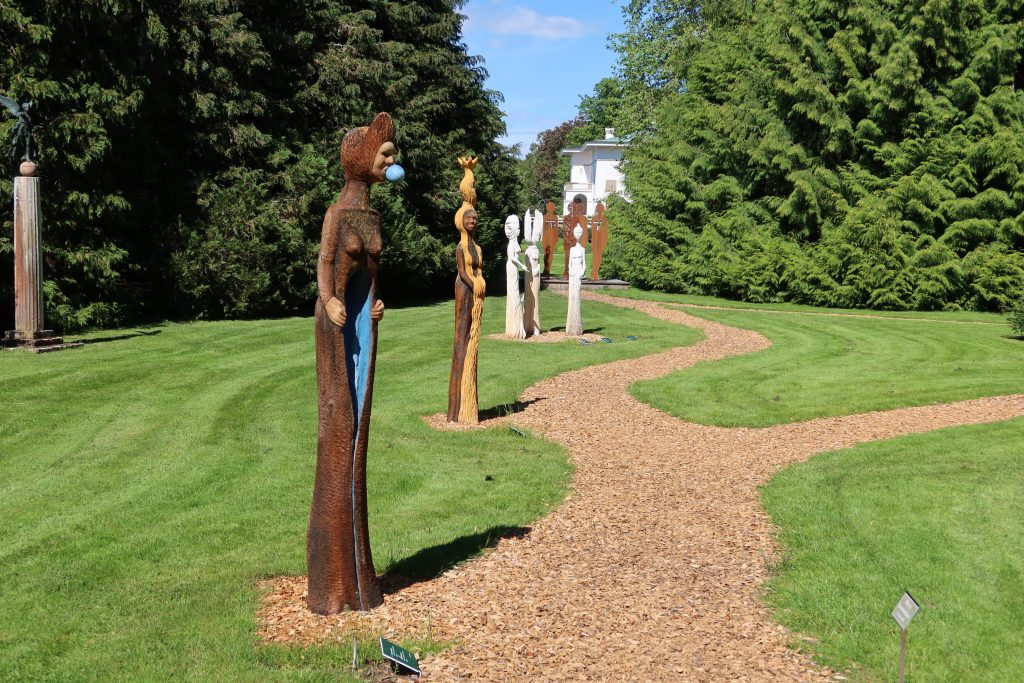
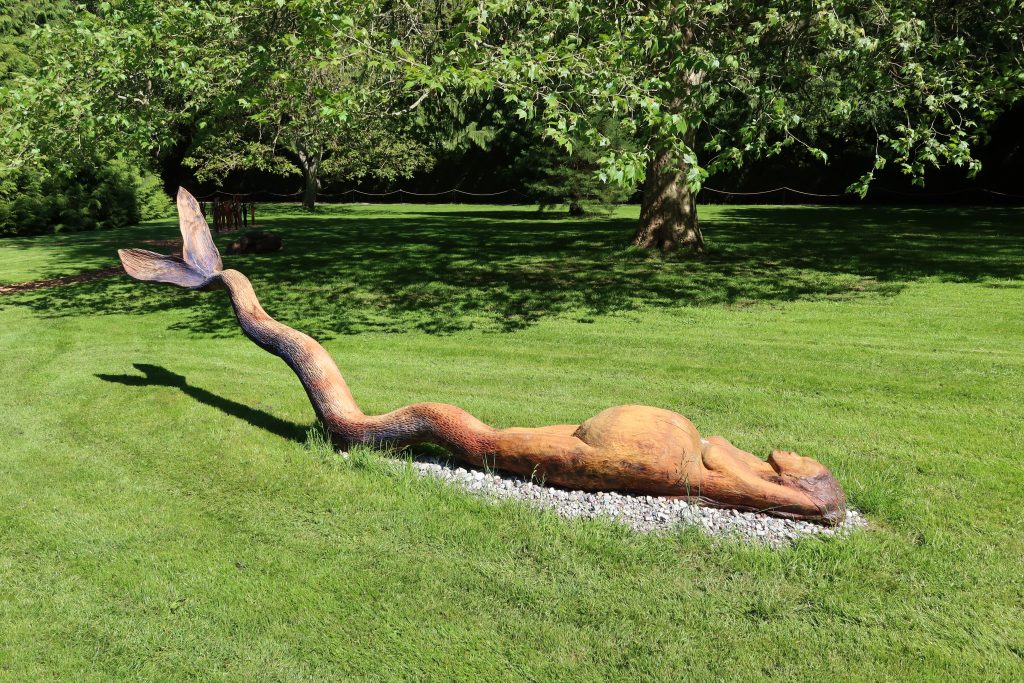
One of the advantages of mooring at Borgholm is that the marina is run by the Strand Hotel just next door, so the overnight berthing fee allows us to use their facilities. These include a swimming pool and sauna – a great way to round off the day ….

